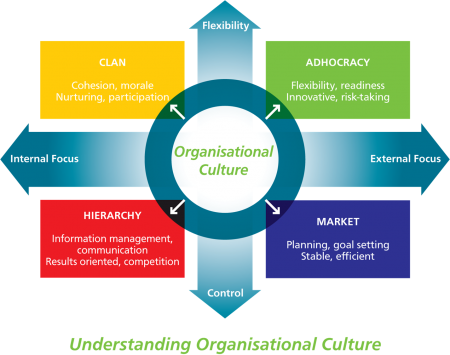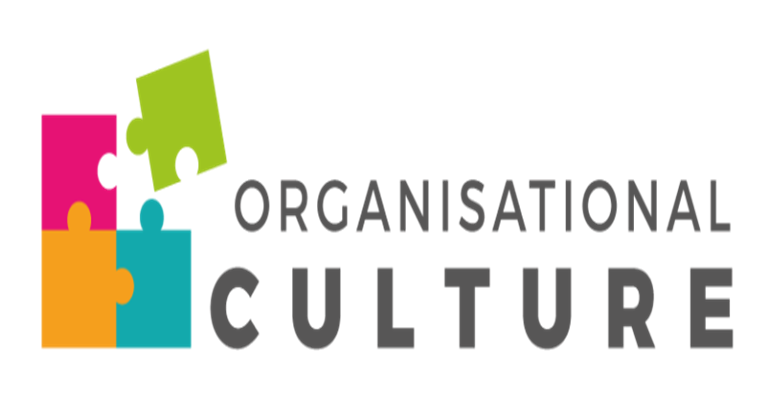What is Organisational Culture?
Edgar Schein (2004) describes organizational culture as “the pattern of shared basic assumptions - invented, discovered, or developed by a given group as it learns to cope with its problems of external adaptation and internal integration - that has worked well enough to be considered valid and, therefore, to be taught to new members as the correct way to perceive, think, and feel in relation to those problems” (Schein 2004, p17). It is evident that Culture is built through shared learning and mutual experience.

The culture of an organisation is its personality and character. Organizational culture is made up of shared values, beliefs and assumptions about how people should behave and interact, how decisions should be made and how work activities should be carried out. Key factors in an organisation’s culture include its history and environment as well as the people who lead and work for it.
Why is Organisational Culture Important?
Advertisment
An understanding of organizational culture is essential for effective leadership. Leaders and managers will be better placed to implement strategy and achieve their goals if they understand the culture of their organization. Strategies that are inconsistent with organizational culture are likely to meet with resistance and will be more difficult or even impossible to implement, while strategies that are in line with it will be easier to put into effect and more likely to succeed.
It is often difficult to specify what exactly drives a particular culture, but easier to observe its effects – for example, the culture of an informal small software company may be quite different from that of a large financial corporation and different again from that of a hospital or a university.
To gain an understanding of the culture of an organization, its written and unwritten rules should be examined alongside the relationships, values, and behaviours displayed by its people. The foundation of effectively shifting or evolving culture does not come from popular approaches like:
- Defining values and “aligning” everything in the organization to them (even though this approach is widely advocated)
- Training masses of people on values and expected behaviours
- Focusing on clarity and alignment, engagement, or other areas of the work climate
- Focusing on improving a few systems like hiring, performance management, or reward and recognition
Research shows that lasting culture change will likely include work in some or all of the areas mentioned above but engaging leadership and the broader organization in a journey of shared learning and mutual experience is at the core of effective culture change or shaping efforts. Leadership is critical in codifying and maintaining an organizational purpose, values, and vision. Leaders must set the example by living the elements of culture: values, behaviours, measures, and actions. Values are meaningless without other elements.
The focus of any organizational culture intervention is not culture only but on how is culture affects the achievement of specific business outcomes desired by the organization. The whole culture change process should be grounded in shared learning; that is why the desired culture will emerge and be supported. Every stakeholder involved in the culture change program must see the need to support because they will see immediate benefits for themselves and the organization.
Related: Organisational Culture And Employee Wellbeing: Connecting The Dots
Culture Profiles
There are four (4) broad organizational culture profiles as illustrated in the diagram below. The overall current and desired organizational culture profiles should be interpreted in the context of the key business outcomes.
Table 1: Organisational Culture Profiles
The Clan Culture
A very friendly place to work where people share a lot of themselves. It is like an extended family. The leaders or heads of the organization are considered to be mentors and maybe even, parent figures. The organization is held together by loyalty or tradition. Commitment is high. The organization emphasizes the long term benefit of human resource development and attaches great importance to cohesion and morale. Success is defined in terms of sensitivity to customers and concern for people. The organization places a premium on teamwork, participation, and consensus. | The Adhocracy Culture
A dynamic entrepreneurial and creative place to work. People stick their necks out and take risks. The leaders are considered to be innovators and risk-takers. The glue that holds the organization together is a commitment to experimentation and innovation. The emphasis is on being on the leading edge. The organization’s long term emphasis is on growth and acquiring new resources. Success means gaining unique and new products or services. Being a product or service leader is important. The organization encourages individual initiative and freedom |
The Hierarchy Culture
A very formalized and structured place to work. Procedures govern what people do. The leaders pride themselves on being good coordinators and organizers who are efficiency-minded. Maintaining a smooth-running organization is most critical. Formal rules and policies hold the organization together. The long term concern is on stability and performance with efficient, smooth operations. Success is defined in terms of dependable delivery, smooth scheduling, and low cost. The management of employees is concerned with secure employment and predictability. | The Market Culture
A results-oriented organization. The major concern is getting the job done. People are competitive and goal-oriented. The leaders are hard drivers, producers, and competitors. They are tough and demanding. The glue that holds the organization together is an emphasis on winning. Reputation and success are common concerns. The long term focus is on competitive actions and the achievement of measurable goals and targets. Success is defined in terms of market share and penetration. Competitive pricing and market leadership are important. The organizational style is hard-driving competitiveness. |
Source: Edgar Schein (2004)
It is useful for you to know your organization’s culture type because organizational success depends on the extent to which your culture matches the demands of the competitive environment. As an example, a firm with a dominant clan culture and weak market culture operating in a highly competitive, aggressive industry may find it difficult to survive due to the mismatch between culture and environment.
The culture profile will reveal what kind of leadership attributes are most valued, what behaviours are most likely to be recognized and rewarded, what kinds of management styles are preferred. It allows you to check how compatible this culture is with the long term goals. The following six comparison standards should be used to interpret your culture profiles.
- The type of culture that dominates the organization and each of the business units
- Discrepancies between your current and preferred culture
- The strength of the culture type that dominates your organization
- The congruence of the culture profiles generated on different attributes
- A comparison of your organizational culture profile with the average culture profile in a similar organization
- Comparison of your culture profiles against high performing organizations
Culture cannot be assessed through a survey or questionnaires alone. Survey views are normally viewed as cultural artefacts and as a reflection of the organization’s climate, but they do not tell you anything about the deeper values or shared assumptions that are in operation. Any assessment of organizational culture should identify first cultural assumptions, then assess them in terms of whether they are a strength or a constraint on what the organization is trying to achieve.
It is much easier to capitalize on the strengths of the culture than to overcome the constraints by changing the culture. In assessing it is important that we are sensitive to the presence of subcultures and also determine their relevance to what the organization is trying to achieve. Culture should always be assessed at the artefacts, espoused values, or share tacit assumptions level. The importance of getting to the assumption level derives from the insights that unless you understand the shared tacit assumptions, you cannot explain the discrepancies that always surface between the espoused values and those observed behavioural artefacts.

Unravelling the Culture Artefacts
The most visible level of culture is its artefacts and creations, consisting of its constructed physical and social environment. These are the tangible aspects shared by members of an organizational group, including verbal, behavioural, and physical attributes. Also included, are things such as the language, myths, rituals, symbols and ceremonies, technology, and art used by an organization. From the standpoint of the uninitiated observer, it is easy to observe artefacts but it is difficult to figure out what they mean, how they interrelate, and what deeper patterns if any, they reflect (Schein 2004).
Identify Espoused Values
The key question here is; why are you doing what are you doing? Responses to this question normally elicit value statements e.g. we believe it’s good to have a hierarchy, we believe every employee can contribute. As these value statements are being said we will check for consensus with the company’s written values. Different values may emerge from different groups. In such cases where a group has different espoused values, there is a need to dig deeper into why such differences exist. We encourage the group to look at all the artefacts they have identified and to figure out as best as they can what values seem to be implied.
Identify Share Tacit Assumptions
To check for underlying cultural assumptions we first check whether the espoused values that have been identified explain all of the artefacts or whether things that have been described as going on have clearly not been explained or are in conflict with some of the values articulated.
Carl Tapi is a Consultant at Industrial Psychology Consultants (Pvt) Ltd, a management and human resources consulting firm. https://www.linkedin.com/in/carl-tapi-45776482/ Phone +263 (242) 481946-48/481950 or cell number +263 772 469 680 or email: carl@ipcconsultants.com or visit our website at www.ipcconsultants.com
